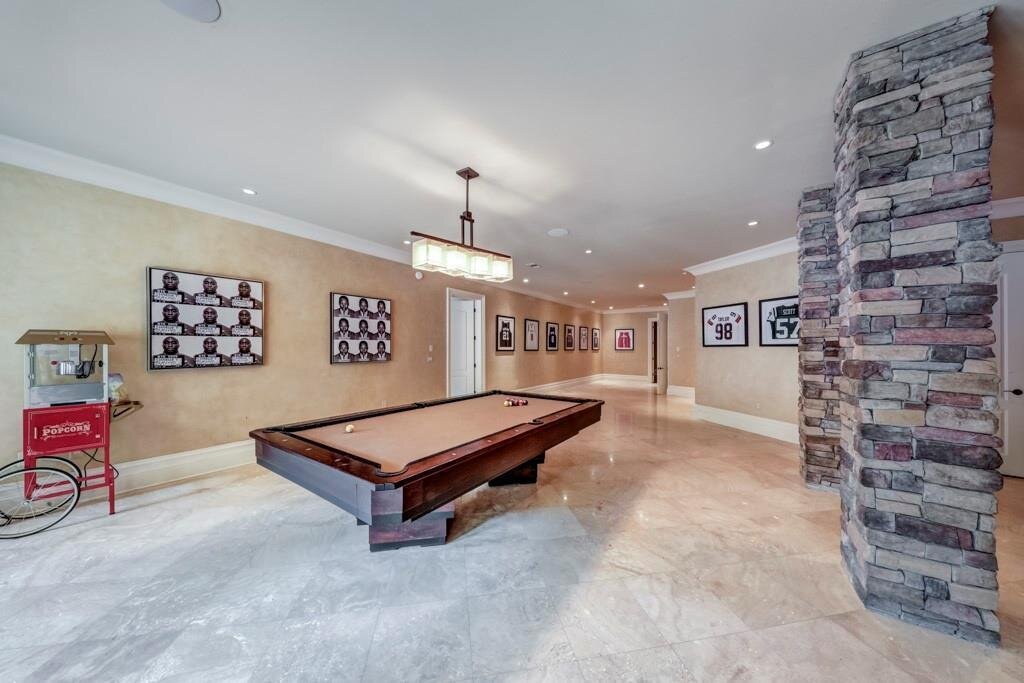A basement renovation is a great way to create more usable space in your home cost-effectively. Just because basements are cheaper (per square foot) than an addition, this does not mean that you should cut corners. Here are some of the top things to consider or avoid when finishing your basement.

1. Improper HVAC design + Humidity Control
It is very tempting to add a duct or two from the existing HVAC system when renovating the basement. Not only is this NOT code in most jurisdictions, but it also does not work well.
The best solution is for the basement to have its own system. The system should be designed by a professional based on the conditions in the basement. You will have problems if your HVAC contractor installs a system that is too small or too large. The basement will not be comfortable, and you may have humidity issues as well.
We recommend avoiding any open combustion equipment such as standard efficient water heaters or furnaces fueled by natural gas. These systems can cause hazardous conditions, such as adding Carbon Monoxide to your air supply.
In addition to the HVAC system, you should consider a dehumidification system. This will help reduce the humidity when the system is not running. Energy recovery ventilators are also a great way to bring in fresh air while exhausting your house’s air pollutants.
2. BEFORE renovating your basement, you should manage bulk water from entering your home
Basements, by definition, are partly or entirely below grade. Older homes that used brick or cinder blocks were not designed to be waterproof when they were built. Newer homes with solid concrete foundations may have waterproofing in place already. Cracks may still form in the concrete so water can come through. Even though it is NOT code, we recommend internal waterproofing on all basement renovations that include finished space. Bulk water can cause structural damage and mold.

If there was no evidence of water leaking into the house, OR if our clients told us that there were no previous leaks, we would not waterproof the basement again. Due to weather patterns causing previously DRY basements to become wet, we are now recommending bulk water management on ALL of our basement renovations.
Bulk water should first be addressed from the exterior of the house. The grade needs to slope AWAY from the foundation, so bulk water is NOT ponding. Foundations should be waterproofed from the exterior for best results. If landscaping prevents this from happening, then there are interior waterproofing solutions that work as well.
3. Radon testing before renovating the basement
Radon is the 2nd leading cause of lung cancer in the US. Good ventilation or leaky houses through passive ventilation can decrease the Radon levels. When basements are renovated, they are brought up to the current building and energy codes. In most cases, this means they are built with fewer air leaks. If the contractor does not design the HVAC system to bring in the fresh air, then the Radon levels could increase! It is best to test for Radon before the renovation starts. Radon remediations are much cheaper BEFORE the basement is finished.
Another good way to deal with Radon and musty odors in basements is to install an Energy Recovery Ventilator (ERV). ERV’s are designed to remove stale air while bringing in the fresh air at the same time. This is a balanced ventilation strategy which is is better than exhaust ventilation. The Exhaust-only method causes air to come in uncontrolled into the area, which brings in humidity or dirty air.
4. Improper flooring in a basement renovation

If you have hardwood in the rest of your house, you may want the same look in your basement. Traditional hardwood floors are not a good idea in the basement due to potential moisture damage. Moisture can come up through the concrete foundation or from leaks on other levels. Warped hardwoods due to moisture are not ideal.
Moisture-resistant flooring like polished concrete or tile is optimal if they fit with the design. Other composite flooring options that are water-resistant provide a unique look for your basement design.
5. Improper insulation details in a basement renovation
There are 2 types on insulation that you need in basements. The first is insulation for thermal control. The 2nd is insulation for sound control. The thermal insulation should be installed on the outside walls of the basement that are adjacent to the exterior. In some climate zones, insulation should be installed below the concrete slab as well.
So how do contractors mess up these details?
Insulate and Air-seal
Insulation in a house is only effective when paired with air-sealing. Fiberglass insulation is useless if air can pass through it. Air sealing is the process of sealing all of the gaps in the exterior walls. This decreases your heating and cooling costs. Air sealing also helps keep bugs out, which seems to make our clients happy!
Some insulations such as spray foam can air seal and insulate at the same time. We also consider ROCKWOOL, which adds fire protection that spray foam does not offer.
6. Basement Renovation with Low ceilings
When I bought my current house, the basement had 8-foot ceilings without any soffits for mechanicals. Sounds good, right? Most basements barely have 8 feet to the bottom of the main level’s floor joists. I should have been happy.
Nope…
The previous owner installed a drop ceiling right 8 feet when the floor’s joists’ bottom was 10.5′ above the finished floor. They wasted 30″ of space that should have been wide open.
The best solution is to make sure the plumbing, HVAC, and electrical components are designed to go between the floor joists so you don’t lose all of that space. If the ductwork needs to go below the floor joists, then a 12″ drop ceiling is plenty to conceal the ductwork and plumbing if it is designed properly.
Another option is to use exposed HVAC ductwork similar to a commercial space. It is more industrial looking; however, the space is much larger, and you do not feel claustrophobic.
Need Help with Your Home? Contact us today



